





NEW FOR 2023
Shimano engineers designed the cutting-edge NANOARMOR technology with nano-level ridges on the line’s surface for increased knot strength and toughness.










Shimano engineers designed the cutting-edge NANOARMOR technology with nano-level ridges on the line’s surface for increased knot strength and toughness.



with the sun in your face, and the backsides of the reeds are shaded; thicker clumps and open lanes become obvious. So are areas with darker bottom, particularly if you’re wearing polarized sunglasses.


TIP: You can also reel weedless paddletails between sparse pads without snagging.
Punching tactics use a heavy titanium bullet sinker pegged to a wide gap hook, Texas-rigged to a large worm or creature bait. Dip or pitch the bait into holes; where there are no holes, flip it onto cover & wiggle you rod tip to force the bait to sink down through matted surface weeds to reach big bass down below.
SSummer is a great time to catch largemouth bass in natural lakes –especially if you enjoy fishing shallow cover. Weed growth is at or near its maximum for the year, providing a jungle of hiding places for bass to hang around edges and ambush prey.

The first and most important principle for fishing shallow cover is that all weeds, wood and submerged/flooded manmade objects are not equal. Upon closer examination, what at first appears to be uniform cover actual features a wealth of pockets, points, holes, and transitions in weed or bottom types. Change is the rule –not the exception.


Shallow cover provides a wealth of visual casting targets where thick cover meets open water. The key is matching the right lures and tactics to the types of cover and mood of the bass. If they’re active, they’ll hit darned near anything that doesn’t foul on the weeds. When they’re less active, you need to slow down and penetrate the cover to get strikes.

Bulrushes / Reeds – Reed beds often appear uniform if you look at them with the sun at your back. But if you approach then
Bass can be anywhere in the best cover on sunny, calm days. Wind tends to focus bass activity on the upwind edge of the bed, however. If you keep the wind at your back, the wind bends the stalks over and away from you, allowing you to cast straight downwind and retrieve lures straight back upwind without fouling on the cover; if you cast crosswind over the bent reed stalks, it’s a nightmare of snags. A wide array of lures from spinnerbaits to spoons, weedless paddletails, swim jigs and Texas-rigged worms provide an array of speed options.
Lily Pads – Pad beds can be expansive or simply narrow bands along shore. Bass can penetrate far back into them as long as they are not weed-choked below the pads and there is room for bass to move. Even so, irregularities along outer edges and holes within the pads tend to attract active bass. Use quick, twitching retrieves with weedless frogs or weedless spoons to cross solid mats of pads, but always pause once the lure reaches a hole or edge, giving bass an opportunity to strike.
Caution: Do not set the hook when the fish boils at the lure or you will miss the hookset. Pausing a heartbeat allows you time to drop your rod tip, reel up slack and then feel the fish on your lure. Smack ‘em, then immediately lift/reel the fish up-outacross the tops of the pads before it knows what hit ‘em.
Grey, overcast days with little wind are some of the best conditions for catching big largemouths in heavy, shallow cover.
Wild Rice – Wild rice can be a nightmare to fish in summer because the long stems lie down on the surface and snag lures. In fall, however, they rise up to form more vertical cover. Try using weedless spoons to narrow down areas of bass activity and then go back and fish clumps, edges or holes with flippin’, pitching or punching techniques.
Cane – Tall cane grows along shore and has pockets, nooks and crannies along its edges. It may look really shallow there, but pitch or flip weedless jigs dressed with soft
(Continued on page 4.)
Seems to be that smoke gets in your eyes throughout much of Canada this summer. But that certainly hasn’t stopped the fish from biting!! Fishing was off to a bit of a slow start, but it is certainly picking up now with the warmer weather upon us. Fish are settling in to their summer patterns nicely in most areas.
I am going to ask everyone who reads Just Fishing to take time to read Dave Chong’s heart felt thoughts on the loss of our buddy Wil Wegman. We lost Wil earlier this spring and Dave has captured Wil’s contributions and love of fishing perfectly. Wil, Dave and I were what we often jokingly referred to as the “The Three Amigos”. For well over a decade we travelled around Ontario presenting the HT Ice Tour Evenings every winter. I’ll always remember the 3 of us crammed in sleep cheap motels one night and the at the Hilton in a lavish suite the very next night – nothing changed… it was just us being us!! We were like three little kids on some evenings and others we were all snoring before you knew it… especially Chonger!!!
Our buddy Wil was one of the kindest and most giving people I have ever known. His passion for all things fishing ran very deep, making his position in the MNR a perfect fit. I still remember hooking Wil up with a little 411 on a waterway he had never been for a tournament pre GPS days. He did very well and got a solid top ten finish… When we discussed a certain milfoil bed on a hump he described it a little different than my recollections. We realized he had found another one not on the charts, probably 300 yards away from my little gem. After realizing that, he felt even better about his top ten finish... knowing that he had done it on his own. To this day, I call that place Wil’s spot!! – Luv ya buddy. I am a better person for having known and spent time with you!!!
Once again we have a load of fantastic content from our usual contributors who are the best line up in any magazine on the planet. and they share it all with you…
Get bit this summer – we got the info for you to make it happen… Just do it! Fish safe…
Unsolicited articles are accepted and will be considered for publication provided they are original and have not appeared in other publications.
Publisher
“Big” Jim McLaughlin
Managing Editor
Tammy Wight
Contributors
Gord Pyzer
Al Lindner
Tim Allard
David Chong
Brian Brosdhal
Jeff Gustafson
Cameron Tait, Wally Robins
Box 214 Seeley’s Bay, ON K0H 2N0.
Phone: (613) 387-8735
Email: info@justfishing.ca
www.justfishing.ca
All Rights Reserved
Reprinting or reproduction in whole or in part is forbidden, except by written permission of the publisher.
On The Cover: Main – "Big" Jim McLaughlin – photo Dave Chong, Al Lindner – Shallow Summer Largemouths, Brian Brosdhal– Dropping in on Suspended Summer Walleyes, Remembering Wil Wegman – photot David Chong.
plastics up and into irregularities in the cover. It doesn’t take much water to hold nice bass.
Casting Swim Jigs – There is always potential to cast and retrieve swim jigs dressed with plastic tails through more open areas and lanes in cover. Ideally, they’re better used along shallow weed clumps on the flats, rather than in heavier, shorelinerelated cover.
Flippin’ – Short-range flippin’ with weedless jigs dressed with plastic trailers is good anytime you have specific, small target areas like holes or pockets. Show no mercy! Jerk fish out of their hidey holes and fight them in adjacent open water. The darker the water and thicker the cover, the more flippin’ applies.
Pitchin’ – Short, underhand pitchin’ casts with weedless jigs are also good for target casting and where the cover is not as thick, allowing retrieves back to the boat.
Weedless paddletails swim between sparse pads with surprisingly little snagging. Steer them along with your rod tip during your retrieve. Not as heavy-duty a tactic, but it works!

Punching – Use a heavy, 1-ounce-plus titanium bullet sinker pegged to a VMC wide gap hook to Texas-rig a large worm or creature body. Dip or pitch it to a likely area and allow the heavy combo to penetrate the surface cover and sink below. Wiggle your rod tip a little to get the lure to break through surface cover. Yo-yo it up and down a few seconds before moving on to the next target. It’s slow fishing, but potentially very productive for big bass.
Weedless Spoons – Large, broad, single-hook spoons ride over and across pads when you keep your rod tip high and establish a rapid, rocking cadence with upticks of your rod tip immediately followed by winding up slack. The spoon seductively dances across pad tops until you stop it and let it settle a few seconds before resuming your retrieve.
Weedless Frogs – Frogs like the Terminator Popping Frog are worked with a series of slower twitches than spoons. Frogs float, so there’s no rush to move them. Still, use a series of gentle twitches to cover water across uniform pad tops until it reaches an edge or hole. Pause a few seconds while waiting for the surface to erupt. Again, always wait to feel the fish before setting the hook! The best froggin’ days tend to be hot and humid without much wind.
Tackle – It is much better to go too heavy than too light when fishing shallow, heavy weed cover. Long, heavy rods like flippin’ sticks and casting reels loaded with 30-pound-test-plus

“Big” Jim
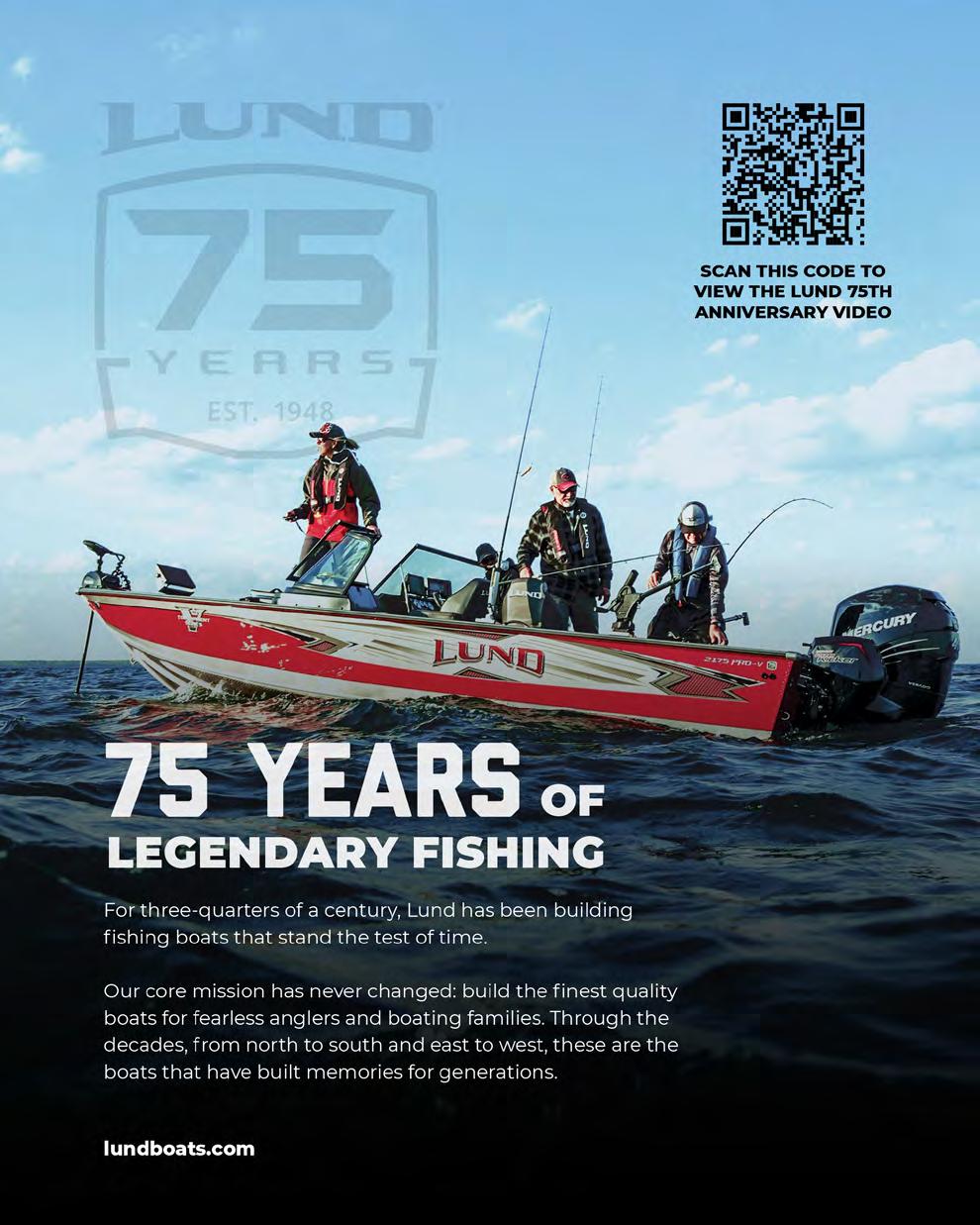
braided line provide the muscle to heave-ho bass up and out of nasty places. Fish a tight drag with no give. There is no such thing as a fair fight for the first few seconds after you set the hook. It’s essential to keep bass on or near the surface. If they re-bury in the weeds, kiss them goodbye.

Weedless frogs are fun and effective for fishing heavy lily pads. Twitch them across the surface until they reach an edge or hole. Get ready. Don’t set the hook on the boil. Instead lower your rod tip & reel up slack, giving fish a moment to get the lure in its mouth. When you feel the fish, slam the hook home & jerk the bass up and out.

Shallow Flats – Sometimes, you encounter expansive shallow flats where you need to quickly cover broad areas with weedless baits to determine key areas of fish activity. Like large lily pad beds, for instance. Make long casts with weedless frogs or spoons to rapidly eliminate areas of dead water until you find bass. Rather than using slow twitches and pauses, employ rapid sequences of twitches to keep baits moving across the surface, only pausing for a few seconds when you lure encounters obvious holes or edges where bass might lurk. Or, obviously, when you get bit.
Once you find bass, more should be nearby. Then slow down and painstakingly pick the cover apart using shorter, close-quarters tactics like flippin’, pitching or punching to extract bass from their lairs.


Al Lindner ranks among the most renowned leaders in the fishing industry. Averaging about 180 days a year on the water, Al is hailed as one of the world’s best all-around anglers. Al’s long and honoured career as an author, syndicated radio & TV fishing show host, video producer, fishing guide, tackle manufacturer, lecturer and champion tournament angler has spanned 35 years of the most revolutionary years in sportfishing.




WWhenever I am presenting fishing seminars, I like to casually slip in the fact that I haven’t spent twenty-five dollars on live bait for walleyes over the last half dozen years. It always produces the desired effect of disbelief, head-shaking and shoulder-shrugging, followed by something that goes like this: “You might be able to get away with that living in Northwestern Ontario, but you sure can’t do it in my home waters.” – Nonsense!
Regardless of where you fish for walleyes, it is no more of a given that you have to use live bait in order to be successful than the fish are always in a neutral or negative mood, or tightly relating to the bottom.



Indeed, as our knowledge of walleyes expands, about the only “given” most days is that your best presentation will involve a soft plastic minnow, grub, swimbait, leech, crawler or even a tube. And if the fake bait secretes a steady stream of seductive scent, so much the better.
When most anglers think about using soft plastic baits to catch walleyes, a grub is almost certainly at the top of the list. Indeed, walleye anglers have probably caught more fish using grubs over the years than any other soft plastic dressing, a fitting testament to the diminutive bait’s versatility. Still, it helps to divide grubs into two categories – those with twister tails and those without.
The first group, typified by the original Mister Twister Tail, Berkley Power Bait Grub and Yamamoto Grub are subtle action baits. When you retrieve them at a slow
to moderate speed, the tail shimmies and vibrates enticingly like a baitfish.





More importantly, however, and less well understood by many walleye anglers, when you carefully balance a 3- to 5-inch twister


Indeed, teamed up with a medium light or medium action spinning outfit, balanced with 6- to 8-pound test monofilament, fluorocarbon, or equivalent gel spun or braided line, the best presentation is also the simplest.
Cast out the jig/grub combo, let it fall to the bottom and then retrieve it at a slow to moderate speed, keeping it within a foot or two of the bottom at all times. Intermittently, pause your retrieve for a second or two, allowing the grub to re-establish bottom contact, and invariably you’ll feel a walleye whack it on the stop.
tail on a 1/8- to 1/4 ounce jig head, ensuring that the soft plastic body is aligned perfectly straight on the shank of the hook, it not only shakes its booty temptingly, but also rocks its body side to side.
No one has studied this understated motion more than my buddy, InFisherman Editor-in-Chief, Doug Stange. He has concluded that, unbeknownst to anyone at the time, the curly tail grub was the original swimbait.
It is an important distinction because so many walleye anglers mistakenly believe that having attached a grub to a jig head, they must subsequently hop, pop and skip the lure to make it work. It is not the case, at least not most days, when a straight retrieve produces the ideal action and catches the most fish.
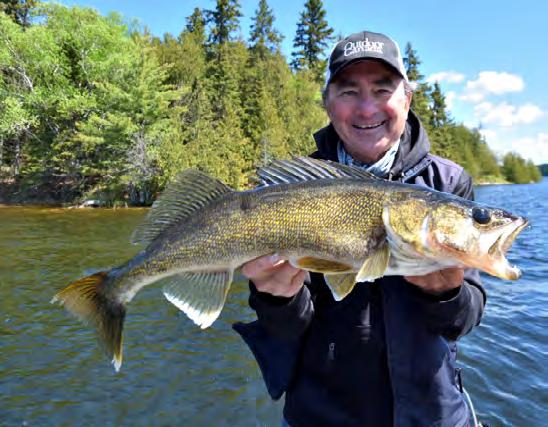
While the grub may have snuck in the back door as the earliest unintended swimbait, soft plastic paddle tails like the Mister Twister Sassy Shad and Berkley Hollow Belly Swimbait, Split Belly Swimbait and Flatback Shad are the unabashed, out-inthe-open, campaigners.
They’re also something else. The best big walleye soft plastic offering most anglers never use.







Do not ask me to explain it, it confounds me, but a handful of friends and I have caught more 10-pound plus trophy walleyes over the last six to eight years than we did during the previous two or three decades, thanks almost entirely to swimbaits.
Having studied at the foot of Doug Stange hasn’t hurt the learning curve either. Stange is the master of the technique and has written and filmed more about using soft swimbaits to catch walleyes than anyone else.

Still, the reaction of most anglers is the same. A five- or six-inch long swimbait skewered onto a heavy 1/2-, 3/4- or 1-ounce saltwater bullet head jig is much too big and bulky for their highly sophisticated fish. – Rubbish!

When you find walleyes on flats and moderate slopes, in water as deep as 25- to 30-feet – isolated crisp weeds, by the way, are a bonus – a swimbait is often the best lure you can use.

The “package”, comprised of a 7-foot long, medium heavy action spinning rod, a reel spooled with 14-pound test gel spun braid, an 18-inch fluorocarbon leader testing 12 to 15-pounds and the above mentioned jigs and swimbaits is as close to walleye perfection as you can get.
The package forces you to fish the bait relatively quickly, in order to keep it the critical foot or two up off the bottom. The weight of the parcel also compels you to constantly drop your rod tip for a second or two while you reel in line. The staggered start, stop, pause triggers trailing walleyes so completely most of the time that the only thing you will see sticking out the fish’s mouth is the tip of the bullet shaped jig. So much for your neutral, negative and sophisticated walleyes.
Whether attached to a crawler harness, dangled off the end of a jig, threaded onto a Slow Death hook, or hooked (through the nose or wacky style) to a drop-shot rig, an appropriately sized,
(Continued on page 11.)
ways they present the lures to catch walleyes, highlights the versatility theme that Mitchell returns to constantly.
soft plastic nightcrawler is often as good as, or better than the living thing. But here is the catch. You may not get quite as many bites with it as you would when you use live bait.
on my Minn-Kota Ultrex that is linked to my Humminbird Helix. And any time I spot a tightly grouped school of walleyes, I hit the Spot Lock and Circle features and cast to them.
walleyes due to the simple fact my lure was in the water for at least 40-percent more time.
“Of course, they shine when you find walleyes stacked up under the boat,” says the legendary Devil’s Lake guide, “but I like to cruise and cover water, looking for pods of fish with my electronics. When I find them running in packs like this, I spot lock. The advent of spot lock and anchor features on trolling motors has coincided with this tactic.
If that sounds like a contradiction, let me explain by way of example. Last early summer, grandson Liam and I were Slow Death fishing for walleyes using healthy live crawlers that we’d babied for days. Instead of being spread out across the top of the hump, however, the walleyes were schooled up tightly. They had to smack our baits quickly or risk losing dinner to a nearby neighbour.
Ripping a Jigging Rap is the solution for hard-to-catch walleyes that are selectively gorging on mayflies in late spring and early summer. Ironically, it is deadly because it is not a feeding presentation.The walleyes aren’t hitting the lure because they’re hungry but rather because you’ve made them angry.
What was happening was when Liam would feel a walleye grab his worm, he’d sweep set the hook, but often missed the fish. So, he
With other anglers in the boat, I have noticed, too, that they typically catch far fewer walleyes initially and snag much more frequently because they trail too much line behind the boat. As soon as they adjust the size and weight of their lure, shorten up the lead and keep the angle between their rod tip and lure at about 45 to 50 degrees, they match me fish for fish.
You’d think this would have been the recipe for success, but there were so many fish hitting so forcefully, like rapid, staccato gun fire, they were often missing the hook and tearing the crawler. As a result, Liam and I were constantly reeling in and re-baiting.
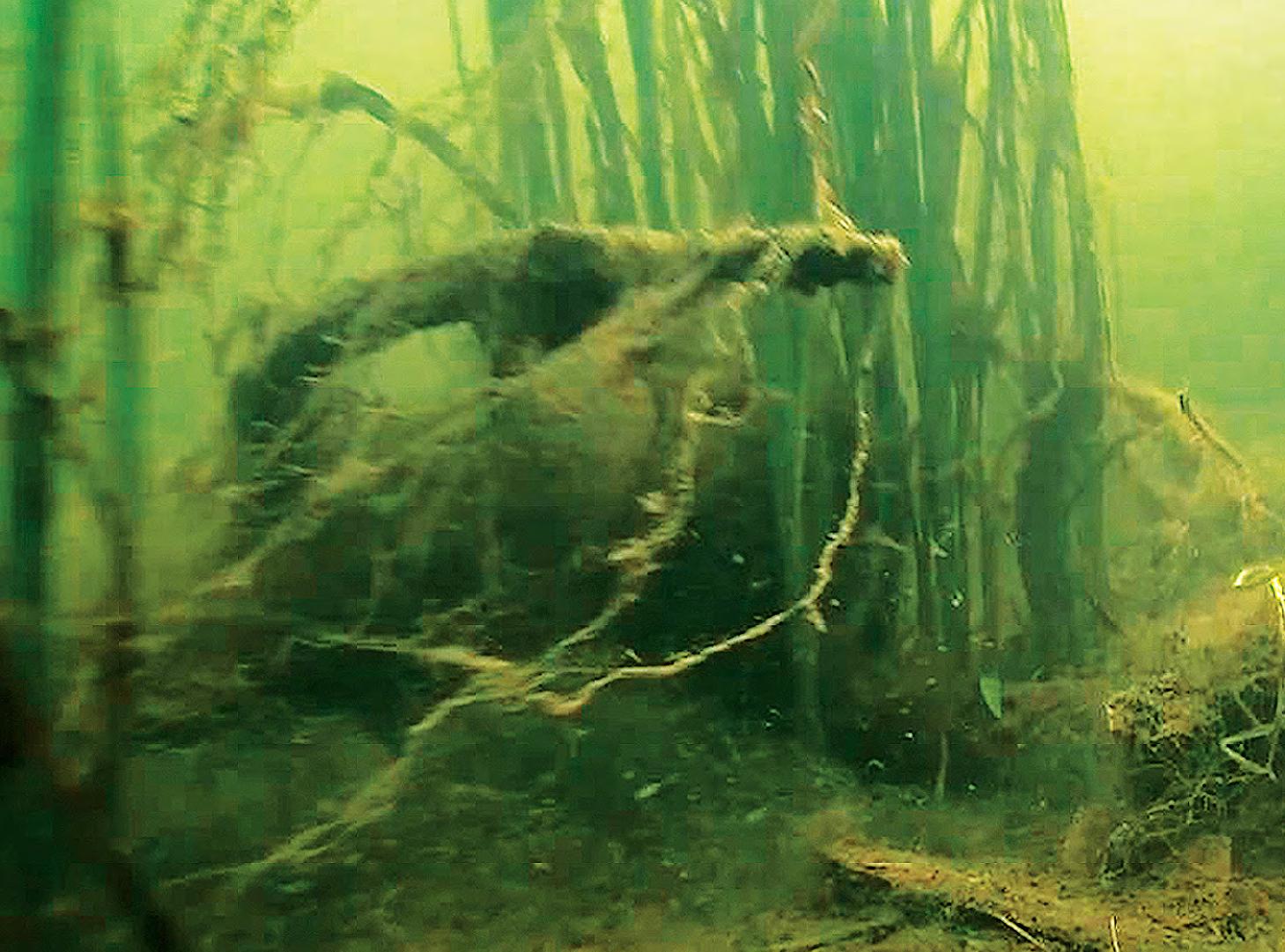
“If the walleyes are scrolling across the sonar screen, on the other hand, I like to use the electric motor to drag my lure past them. If I drag it through the school, or get off my last waypoint, I’ll cast back to the fish. Or across if I can see them on the side scan. I really like to work from the back of the boat if I am relying on side scan, so I can cast the angle better.”

Instead of sticking with a real crawler, however, I threaded a soft plastic worm onto the curved hook, slid the nose of the soft plastic over the eye, nipped off the tail so only an inch-long nub flopped behind the bend and dropped the corkscrewing collection over the side of the boat.
Like Mitchell, I’ve enjoyed outstanding success strolling and snapping Jigging Rapstyle lures as I work between waypoints using the iPath and cruise control features
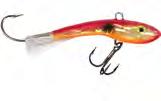

Liam continued to be bombarded with bites, getting probably 20-percent more hits than me, but I caught significantly more
I should mention, too, while we’re talking about snags, the best way to avoid them when you’re casting is to position your boat in deeper water, if it is available, off the side of a structure, so you’re casting up to the walleyes and retrieving the lure downhill. Try to rip it up the slope, on the other hand, especially over a rocky bottom, and you’ll pay a dear price in lost baits.
As with most new techniques, when Jigging Rap-style lures first transitioned from the winter to the open water season, most walleye


had to reel in and re-bait. I’d feel a walleye smack my soft plastic corkscrewing nub, on the other hand, sweep the rod forward and if I missed the overly aggressive walleye the first time, I simply dropped back the bait and nailed it on the second, third or fourth hit. The fish couldn’t steal my bait, couldn’t pull it down the hook and couldn’t alter its action.
on
(A Soft Spot for Walleyes continued from page 11.)
(Dailing-In Depth Control for Walleyes continued from page 7.)

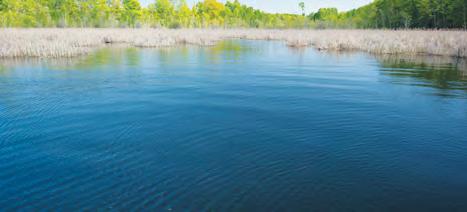
This rigged with a Scented Jerk ShadZ is d-e-a-d-l-y for casting, strolling, and jigging for walleye.


A soft-plastic’s profile also comes into play. Switching from a bulky bait to a thin profile may be all that’s needed to stay in the strike zone longer and get more bites. Getting this right trumps picking the “perfect” profile of plastic, in my book.
When you’re out on Laker-Whitefish grounds and you see fish feeding off the surface from the many insect hatches that occur in the spring, you can rest assured that these are probably Lakers whether it’s over 70-80 FOW or not. Using forward facing sonar like a Garmin LiveScope setup can help you spot these cruisers from a good distance away. We’ve had some productive fun days catching Lakers on Lucky Craft jerkbaits or Screw Pointers when they feeding up high! A Screw Pointer is Lucky Craft’s version of a spy bait!
You’re making a mistake if you’re not using soft plastic baits infused with scent. That is the clear message from Pure Fishing’s Dr. Keith Jones, who invented PowerBait and has carefully studied how fish use their sensory channels. In order to determine if it should eat something, Jones says a walleye has to touch it, smell it, and taste it. He also says oil-based scents don’t work, as fish can only detect water soluble odours. Lastly, Jones says walleye specific scents are better than forage (shad, nightcrawler) based elixirs.“The foundation in our walleye impregnated Power Baits represents the “meat and potatoes that appeals to most predatory fish,” says Jones. “But then we spike it with walleye specific enhancers. Things we’ve learned that walleye like best.”
Noteworthy here is the tactic of casting 4- and 5-inch swimbaits for walleye. Here a popular strategy is using heavy 1/2- and 3/4-ounce jig heads to keep the bait near the floor. Going heavy helps keep the presentation near bottom, while still allowing for a steady retrieve to activate the plastic’s boot-tail, cover water and trigger reaction strikes.
Lake Simcoe Guru, John Whyte doing the heavy lifting with a Lake Simcoe Northern Pike!

Ditto, in the spring or anytime for that matter when walleyes are roaming the flats, feeding on yellow perch and whacking crawler harnesses. Scented soft plastic crawlers almost consistently catch more and bigger walleyes than live crawlers owing to the fact that the perch and panfish can’t nip, snip, squeeze or otherwise pull them apart. So you spend the bulk of your time fishing, not re-baiting your hooks.
I’ve written about the potency of drop-shotting in Just Fishing before, but it bears mention again. A drop-shot is excellent for keeping a bait at a specific depth off bottom because you can control the length of the tag end. The key is experimenting with its length.
One of the most fun fish to catch on Lake Simcoe in the spring is the Northern Pike! They are generally super aggressive at this time while they’re trying to bulk up and recover from the rigors of the spawn! They also grow to that trophy 40 plus inch range and can be over 20 plus lbs. Cooks Bay is probably home to the largest number of pike on Lake Simcoe. At this time, they can be found in the lower end of the bay adjacent to where they just finished spawning at last ice! They will eventually start moving out to the first drop-off and if there happens to be fresh weed growth there, that’s even better! Any weedlines that you can find with access to deep water can be a hotspot! There is a good population of Northern Pike found in Kempenfelt Bay, Barnstable Bay, Georgina Island & Virginia Beach!
When walleye are hugging bottom and you’re vertically fishing, try anywhere from a 6 to 18 inch tag end below the hook. When
It is the same thing when walleyes want a leech or minnow towed behind a single hook harness. Day in and day out, when panfish abound, you will catch as many or more walleyes trolling single hook harnesses dressed with a scented, soft plastic leech or minnow as you will the real deal. You may not feel quite as many bites as your live-bait-buddy beside you, but you will put as many or more fish into the boat. And at the end of the day, that is the only thing that ever matters
The other place soft plastic crawlers, leeches and minnows excel, especially tipped to a jig, is in rivers. And the stronger and faster the current, the better they shine. Indeed, on many fast flowing rivers, wise walleye anglers will “double up” and “bulk up” their jigs using two soft plastic dressings.
loads of walleye.
Occasionally while targeting spring Whitefish or Lake Trout, you run into the bonus Burbot!!!!
About the Author:
The classic set up is first threading on a 3- to 5-inch long soft plastic minnow so the hook is exiting out the back of the bait. Then a second soft plastic minnow is attached to the hook by running the point under the jaw and out the nose. (By the way, instead of attaching a second minnow, some river rats will nose hook a small plastic crawler or lizard.)
There is method to this madness because when you double up this way you’re offering the walleyes a much bigger and more attractive package without adding a ton of extra weight, considerably more tail wag and action and twice the bouquet if you’re using scented baits.
Tim Allard is a full-time, award-winning outdoor journalist and author/photographer of the book, Ice Fishing: The Ultimate Guide. He’s a regular contributor to numerous North American print and online publications. From panfish to northern pike, Tim fishes whatever he can, whenever he can.
I try to keep things simple when it comes to lures and presentations for Pike but one important piece of equipment that you must use is some form of leader. A Stringease titanium tippet/leader measuring anywhere from 6-12” is sufficient. These tippets consist of a 20-30 lbs. test titanium wire attached to a Fastach snap only and there is no swivel on it. These tippets are perfect for jerkbaits such as the Lucky Craft Lightning Pointers that I like to use when targeting Pike. Normally adding a regular wire leader in front of a jerkbait (Continued on page 20.)
life-like action that fish can’t resist.





• Fish bite and keep biting, cast after cast - even on pressured fish.








Talk about great soft plastic options that almost no one is using when walleyes are feeding on crayfish, as they are in far more lakes and rivers than most anglers realize, tube jigs and Ned Rigs represent the ultimate presentation.


I stumbled onto this pattern many years ago, while fishing for smallmouth bass after rusty crayfish invaded Lake of the Woods and displaced the much smaller, more docile, native variety.
Today, so many rusties inhabit the big border water that it is impossible to lay a live or soft plastic bait on the bottom and not have it carried away by a crawfish. As a matter of fact, the rusty population is so huge, most first-time walleye anglers on the lake mistake crayfish dragging away their baits as bites from small fish.
The massive lobster fest, however, has not gone unnoticed by the fish. Mark a school of walleyes on your sonar screen inhabiting a shallow rocky shoreline or moderately deep reef, and pitch in a brown pumpkin, watermelon green or similar crayfish-coloured 3- to 4-inch long soft plastic tube stuffed with a 1/8-, 3/16- or 1/4-ounce leadhead or a classic Ned rig.
A medium action spinning rod spooled with 8- to 10-pound test braid is essential for the “feel” factor. I always attach a 12- to 18-inch, eight-pound test Maxima Ultragreen leader, but several friends tie their tubes and Neddies directly to the superline with no negative effects.

The key always, however, is keeping your bait on the bottom and not hopping or popping it too high, as you might when you’re fishing for bass. Instead, let your lure fall to the bottom and rest for a couple of seconds. Then, shake the line as you would when fishing a shaky head jig, so the tentacles on the tube or nub on the Ned rig tick, tremor and twitch without the bait actually moving forward.
If you don’t get a bite, drag it slowly along the bottom for a couple of feet imitating a crayfish and then repeat the slack line shake. Sometimes, you will feel only the mushy weight of a walleye when it sucks in the tube, but most of the hits are so shocking, you will forget the soft plastic, scented bait was invented for bass and believe it is the best thing happening for walleyes. Because, like so many of the soft plastic baits – it is often just that.
2009 Inductee, Canadian, Angler Hall of Fame, Fishing Editor, Outdoor Canada Magazine, Field Editor, In-Fisherman Magazine & Television, Co-Host, In-Fisherman Ice Fishing Guide, Television, Co-Host, The Real Fishing Radio Show, Host, Fish Talk with “The Doc”, Outdoor Journal Radio & President, Canadian Angling Adventures Ltd.



It senses the bottom and delivers the perfect hold. It knows when wind and waves threaten to knock you off your spot, and re-anchors automatically. It’s built to last, built to fight and built to keep you in the game until you get what you came for. This is Raptor. And it’s only from Minn Kota®
minnkotamotors.com/Raptor

AAny electrician will tell you that water and electricity don’t go well together. However, as with anything there are exceptions. Using the correct safety equipment and with the appropriate training, electricity can be used by fisheries biologists in a number of ways.


Electrofishing is by far the most common use of electricity in the context of fish biology. Electrofishing involves using a generator or batteries to generate a charge (often between 300 and 700 volts) that is passed between an anode and cathode in the water. This generates an electric field that can temporarily stun fish so they can be easily netted.
Electrofishing can be done from a boat (often with the hull of the boat serving as the cathode) with long anode poles extending forward from the bow of the boat. In those instances a generator is used to power the electrofishing unit and one or two netters stand at the front of the boat behind a cage (to prevent them from falling in) to dip stunned fish. Those on the boat wear nonconductive gloves and a foot pedal “deadman” switch is used so that if someone were to fall overboard the current is interrupted. In Ontario there are about 10 electrofishing boats operated by governments (OMNRF, DFO), consulting firms and universities (U Windsor and Carleton U).

backpack style which is usually powered by battery. A good pair of non-leaky waders is essential to protect the operators given that they are essentially surrounded by current while in the water. The individual wearing the backpack has an anode on a poll that they move around in the water while the cathode is a rat-tail that drags behind. Usually at least one netter and someone carrying a bucket to hold the fish accompany the operator. Backpack shockers are much less expensive than boats so in a province such as Ontario there are probably around 50 of these devices in operation.
Electrofishing works really well in shallow waters such as nearshore areas of lakes and rivers (via boat) as well as in small streams (via backpack). Often those areas have complex structure like logs, vegetation and boulders that make it difficult to use other sampling methods like nets.



Electrofishing does not work at depths of more than a few feet and is completely ineffective in saltwater given that the conductivity of the water is higher than that of the fish so the electricity goes around the fish. For some species like walleye that hang out in deeper water during the day, it is typical to electrofish at night. This involves equipping the boat with spotlights that shine into the water.
In North America the use of electrofishers is restricted to those with appropriate training and that hold a valid scientific collection permit. All individuals involved with electrofishing require certification and CPR training. Although electrofishing has the potential to be harmful to people, thanks to robust safety protocols and training, I am unaware of any serious injuries to humans arising from electrofishing. Fish on the other hand can have different experiences if the settings for the shocker are not correct. Improper settings can result in bruising, burns or even broken vertebrae as a result of rapid muscle contractions (tetany).
Knowledge of environmental conditions such as water conductivity and experience of the operator are needed to identify which settings are most effective at capturing fish and doing so without negative consequences. When a fish is shocked they typically are fully knocked out for about 2 or 3 minutes and then they slowly regain equilibrium and can be released after about 5 minutes. With the proper settings, electrofishing is one of the safest ways to capture fish to assess the state of fish populations.

There are stories from some parts of the world where desperate peoples will cut down hydro poles so the hydro wires fall into streams and rivers. After the shower of sparks (and explosions) shocked fish can be harvested. Such illegal methods are thankfully rather uncommon.
Another way in which electricity can be used it to temporarily immobilize fish for various procedures such as the surgical implantation of radio transmitters. The same TENS devices and gloves used for physiotherapy can be used for fish immobilization. The surgical assistant wears protective rubber gloves with a pair of electric gloves overtop. When a fish is touched on the head and tail they become unresponsive so surgery can commence while water is pumped over the gills. Once the surgical procedure is completed, the individual wearing the electric gloves stops touching the fish it is ready to swim away. This is very different from a more traditional approach where various chemicals are used to immobilize fish.
When chemical sedatives are used the fish tend to be “hungover” such that it takes time for them to resume normal behaviour. Think about how you feel after general anesthesia! Moreover, some of the chemicals used for such purposes have restrictions on their use in fish that could be consumed by humans. Electro-immobilization is now a common technique allowing biologists to tag and release fish without the fish having chemical residues.

Electricity can also be used to guide fish to desirable areas bypass channel) or away from undesirable areas some cases, electricity can also be used to prevent fish movement. For example, near Chicago an electric barrier is used to prevent invasive silver and bighead carp from making their way into the Great Lakes. Such approaches remail relatively uncommon given the need to restrict such applications to areas where there is no possibility of accidentally shocking people!

Although water and electricity are usually not a good mix, thanks to the creativity and careful work of electrical engineers and biologists we are able to harness electricity for our benefit. Next time you see spotlights and hear a loud generator operating on a lake at night, instead of concluding that it is an alien invasion or poachers, you can rest easy knowing that biologists are out there checking up on local fish populations.


Dr. Cooke is a professor of fish ecology at Carleton University (www.fecpl.ca). He is an avid angler and advises governments around the globe on fisheries management and conservation. He is also a Science Ambassador for #Keepemwet Fishing.

decade long friendship, which I cherished deeply until Wil’s recent passing. He was passionate about so many things and we shared many common interests. Tournament fishing was obviously one sport that we both loved. As I expanded my tournament resume, Wil cut his back, mostly competing in Aurora Bassmasters & OBN events. Even though he cut back his tournaments somewhat, his interest was always there.

When he & I spoke, he’d always want to know what was happening in the tournament scene, tackle trends & such. He competed in numerous Hank Gibson Memorial tournaments in hope of representing the Ontario B.A.S.S. Nation at the Divisionals, Nationals & maybe the Bassmaster Classic! Competing with the Aurora Bassmasters, Wil won 4 “Angler of the Year” title and qualified 3 times for Team Ontario through the Hank Gibson memorial events!


Wil was a founding member of the Aurora Bassmasters, of which I became a member eventually. He held the conservation director title for as long as I could remember and many of his conservation initiatives led to the club receiving at least 3 B.A.S.S. Conservation Awards over the years! He was also the Conservation Director for the Ontario B.A.S.S. Nation (OBN).

I was able to participate in a few of Wil’s conservation projects such as a road side cleanup or improvement of spawning habitat, etc. Wil himself has been awarded the Rick Morgan Professional Conservation Award from the Ontario Federation of Anglers and Hunters for his conservation efforts. He was also a vital part of the Lake Simcoe Fisheries Stakeholders Committee, helping to look after the well-being of his favourite lake!
He was always usually first on the list of volunteers for the Family Fishing weekend event on Fairy Lake in Newmarket! He was always willing & able to provide assistance to anyone who was interested in fishing! Wil & I were both advocates

life-like action that fish can’t resist.









• Fish bite and keep biting, cast after cast - even on pressured fish.







for accessible affordable fishing for all and getting kids out fishing. We’d often talk and share ideas about how to maintain accessibility for anglers especially urban anglers. We often partnered and worked with David Clark & members of the Toronto Urban Ambassador to promote urban fishing in Toronto.
Wil also headed up the GTA Recreational Fishing Committee to help promote urban fishing in the GTA! Wil was often stuck in a tough situation because of his job as a Resources Management Technician at the Ontario Ministry of Natural Resources. He’d have to be so careful in what he did and what he said but he would always try to help in any way that he could.
From 1986-2010, Wil offered and taught a bass fishing course at Seneca College and I still constantly run into people who took that course with Wil. Everyone of these


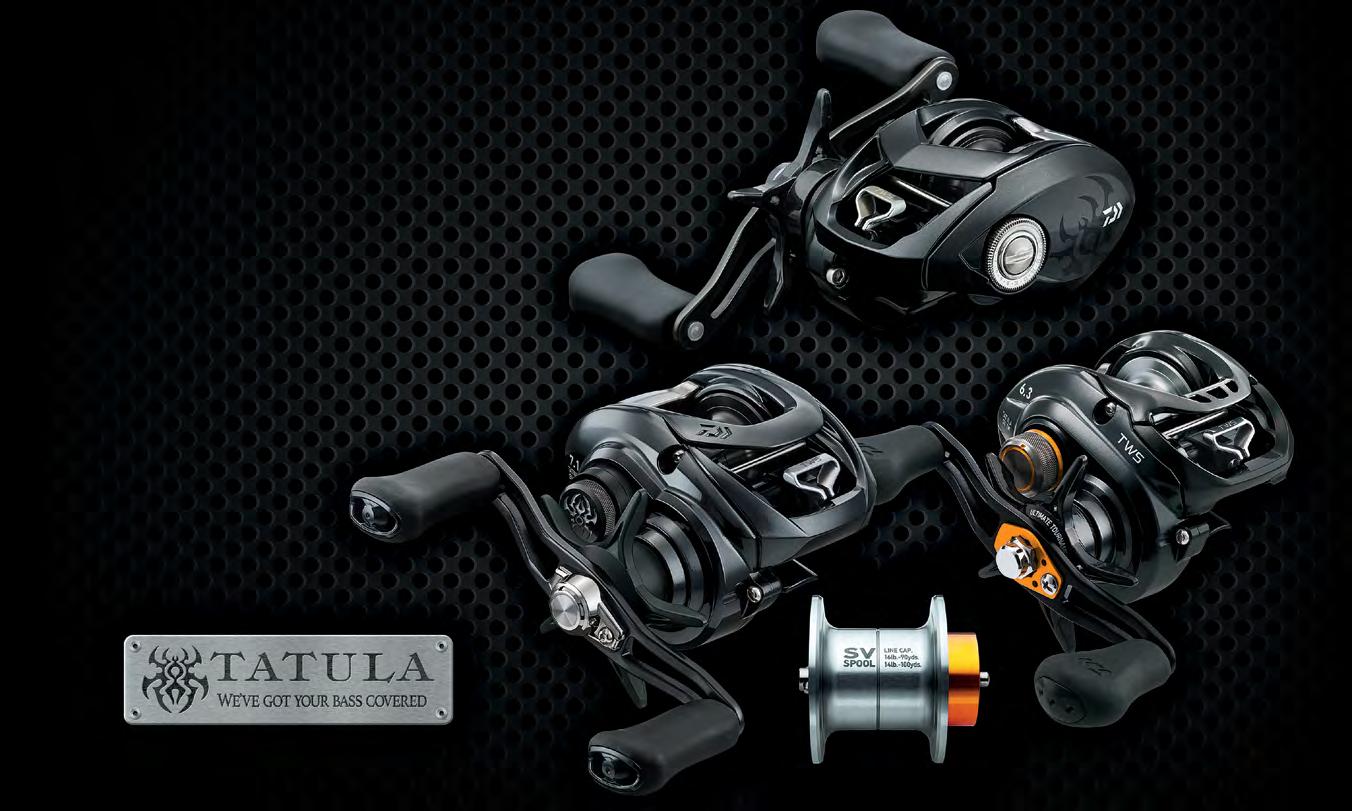
former students of Wil’s could not say enough about their teacher! He even put on amBASSadors Cup Tournaments for his students each year, many of these former students attribute their love of fishing and in particular, tournament fishing to Wil and his course!
(Continued on page 21.)



As a freelance writer, Wil wrote a regular column “HOOKED on Fishing!” for the Lake Simcoe Living magazine as well as having articles published in Ontario Out of Doors, Outdoor Canada, Bob Izumi’s Real Fishing, “Big” Jim’s Just Fishing and Bassman Magazine. As an accredited B.A.S.S. Press Observer, Wil covered numerous Bassmasters Classic. But I never saw him as excited as he was when he got to ride with Jeff “GUSSY” Gustafson at the 2020 Bassmaster Classic on Lake Guntersville! He was as giddy as school kid to be in the boat with a Canadian qualifier at the Classic! And no one was more excited back home than Wil when Gussy brought home the coveted Bassmaster Classic trophy on the Tennessee River!

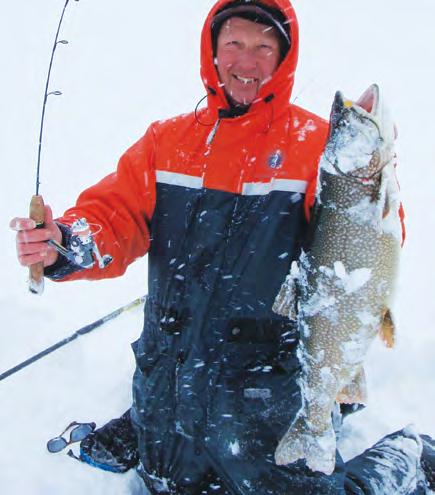
Wil was a loyal prostaff for HT Enterprises & Normark Canada for many years! I was lucky enough to join him & “Big” Jim Mclaughlin on the HT Pro-staff from 2011-2022 and
(Continued on page 22.)
(Remembering Wil Wegman continued from page 21.) we travelled all over the province with the HT Ice Tour. We dubbed ourselves the “Three Amigos” as we presented seminars to promote ice fishing! We had more than our share of laughs and met some great people while on the road for these events. I truly looked forward to these road trips in the winter and hang with these two “LEGENDS” of the sport of fishing in Canada!
Wil & I did share many days chasing “JUMBO” yellow perch through the ice on Lake Simcoe. It was pretty awesome, when conditions were right to see him out there with his Norwegian kick sled! He competed at the World Ice Fishing Championships for Canada one year and had numerous top finishes at the Canadian Ice Fishing Championships. He even won a Clam Trap Attack event and a Perchin’ for MS with his son Izaak! His passion for ice fishing was unsurpassed and it definitely showed anytime we were on tour, out on the ice and just chatting about it!




David Chong is widely recognized as one of Canada’s top competitive tournament anglers. He is also an avid multi species angler and is a strong advocate for affordable, accessible angling for all! David loves sharing his vast fishing knowledge and stories with anglers of all ages, beginners and pros alike!



A scientifically superior vibrating jig that fish simply hammer harder and hold onto longer. Combining an innovative through-head design proven at Berkley ® Labs to deliver more consistent vibration – even in heavy cover – with a hand-tied PowerBait ® -infused silicone skirt, it sends fish into a frenzy. Comes in 3⁄8 and 1⁄2 oz. sizes, and 12 colors to match any condi tion, with sticky Fusion19™ hooks to help put more fish in the boat.
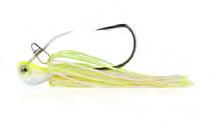






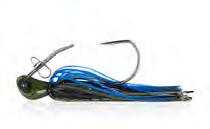

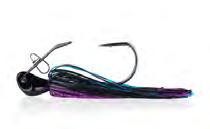
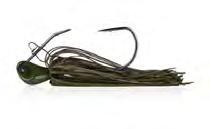

Berkley-Fishing.com

simply catch a bass so we could walk across the stage. The first several tournaments, our results we not that great but after a few years we started to get competitive. We were fishing several events on Lake of the Woods and Shoal Lake.
By:One of the questions that I get asked quite often is “what motivates you to keep doing what you do” – making a living within the fishing community. The first thing that always comes to mind is that I just want to avoid having to get a real job – a Monday to Friday gig, where I might not be my own boss. While, it hasn’t always been easy, profitable or convenient when it came time to get a loan for something, I have stuck with the fishing thing and it has been working out pretty good. Being in the boat is also a happy place for me, always, regardless of the weather or the fishing. The fish don’t bite every day and I’m okay with that.
Today, at 40 years of age, this is how I’m combining tournament competition, guiding, outdoor writing, sponsorships and promoting the sport of fishing to make a living.
As a youngster, I was fortunate that my parents took me to catch the weigh-ins at the Kenora Bass International, our home town tournament that started in 1988. I can remember just wanting to go and try to catch a glimpse of the fish while the guys were in the weigh-in line.
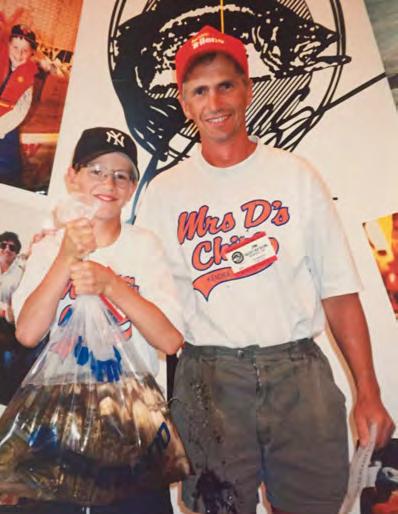
I fished the Kid’s KBI a time or two and then for my tenth Christmas, my Dad and I got an entry in the 1993 KBI – we were going to do it. Our goal that first year was to
In 2000, at 17, Chris Savage and I won the KBI, which was a big boost for sending me down the fishing road that I took.

In my late teens and early twenties, I fished every tournament I could across the region, even a few walleye tournaments but I never had the success in those that I did in the bass events. My summers revolved around competing in these tournaments.
I fished as many different waters as I could and I think that helped me become a better overall angler, just gaining experience in a variety of situations. We didn’t always do well but my friends and I were fishing a lot, learning a lot and every once in while we would win one and keep the gas tank filled up.
In 2012, I caught a break when one of my guiding clients offered to help me sign up to fish some pro level tournaments in the U.S. I signed up for the four-circuit FLW Tour Opens and did well enough in those

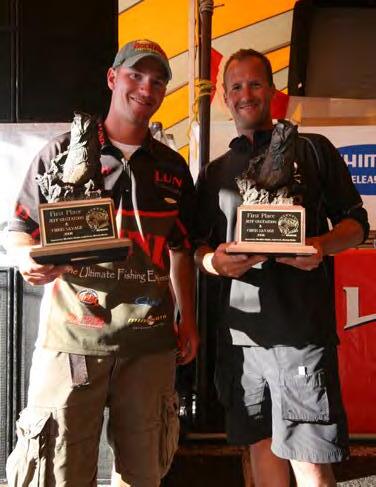














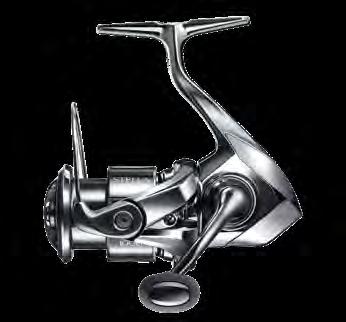
to qualify for the FLW Tour the following year. Those events had $4,000 USD entry fees and at that time I didn’t have that kind of money to spend fishing tournaments on waters that I had never seen before, fishing against the best bass anglers in the World. Fortunately, I did well enough to hang in there those first few years and I’m still doing it today. I fished the FLW Tour for six
years, then in 2019 I joined the Bassmaster Elite Series, the top circuit in professional bass fishing. All of the tournaments that I’ve fished over the years, hundreds of them, led me to Knoxville, Tennessee in March where I won the Bassmaster Classic, the Superbowl tournament in bass fishing.

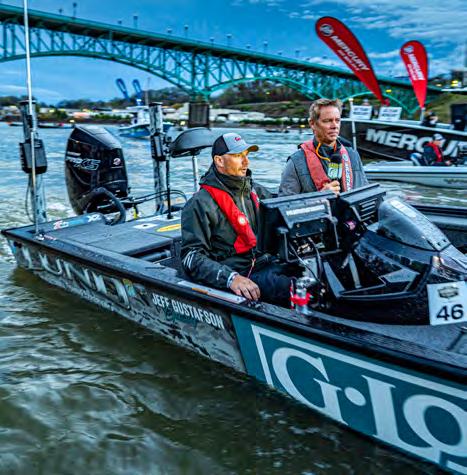
The $300,000 first place prize from that event will help to keep me going for the foreseeable future.
Competing in tournaments is the toughest way to make a living in the fishing industry because there is no guarantee that you’re going to catch fish and make money. You’re gambling basically, but if you are good at it, you can win good money and gain credibility that can help you in some of the other endeavors that we’re going to discuss as we go here.
Further complicating the tournament gig for anglers in our part of the World is our season is so short so we only have a limited number of events in which we can make money. To really chase this dream, whether you want to fish professional walleye or bass tournaments, you almost have to cross the border into the U.S. where there is a bigger stage and more opportunity to make money competing throughout the year. Central Canada is a fantastic place to learn and hone your skills however.
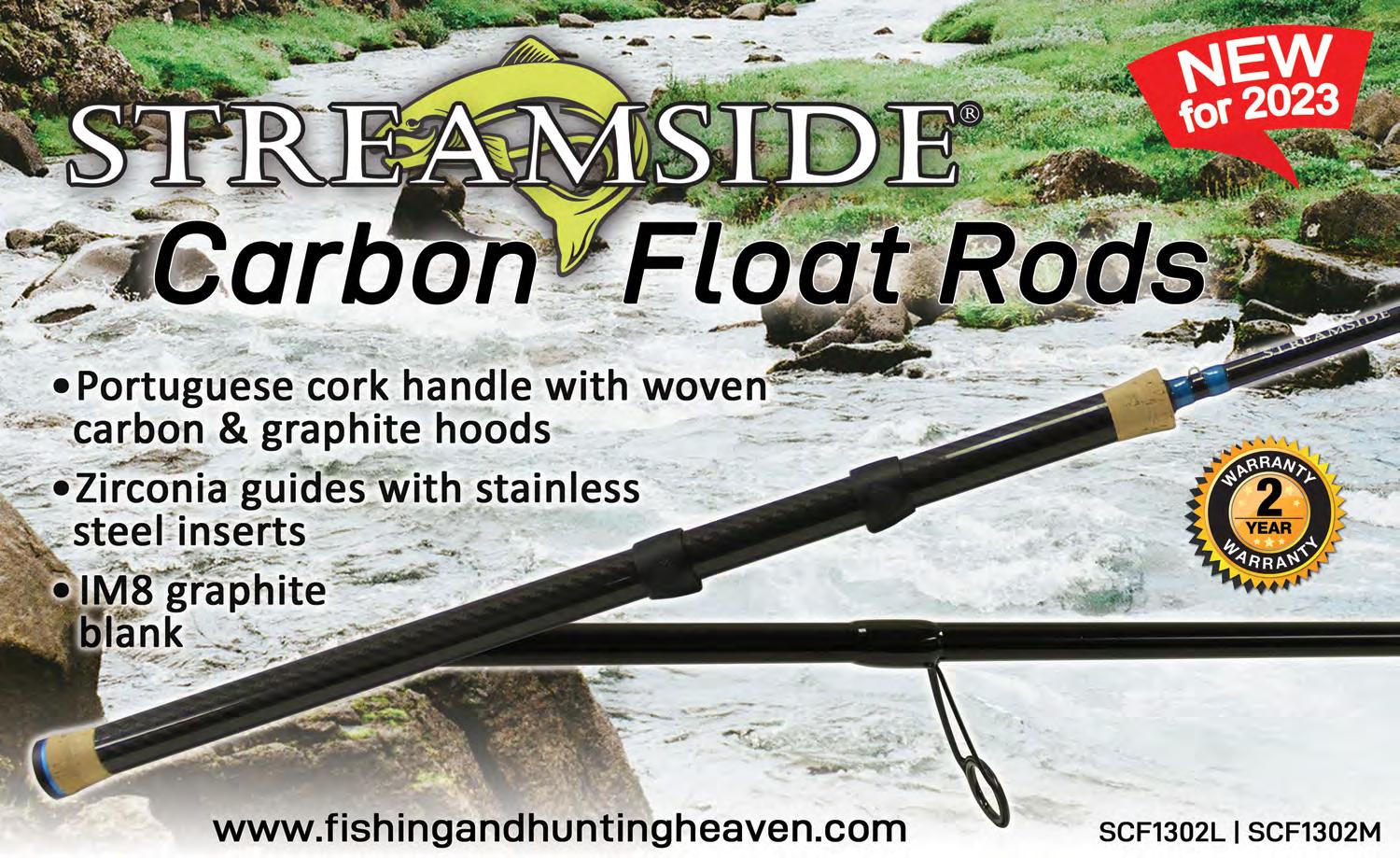
In the 1970’s my Grandpa, Wally Stewart, built a cabin in Echo Bay on Lake of the Woods. Our whole family would spend good chunks of the summer there and I spent hours and hours casting off the dock. Eventually I was able to start taking a 14 foot Lund with a 15 horse motor out to explore and find adventure on the water, probably at around ten years old. At first I had to stay within sight of the cabin and always wore a life jacket but as time when on I could venture further away. The cabin offered me access to the lake and fishing at
an early age and I just caught the bug. I was a teenager when I started reach out to some of the tourist camps on the lake. I needed a summer job and I wanted to guide. By the time I was 13 or so I knew my way around the west arm of Lake of the Woods and Shoal Lake pretty good. Roger Clinton out at Ash Rapids Camp hired me to work on the weekends, doing camp work
and helping out with whatever I could. When I was 14, one of the guides didn’t show up one morning and I got to do my first fishing trip. I was a small, geeky kid with glasses so I’m sure when I jumped into the boat, the American guests probably thought, “are you kidding me”?!? I took them to all of my best spots and we caught a bunch of bass and pike, it was a success.
Through high school and university, I guided every chance I could during the summer, in between tournaments. I worked at several camps around Lake of the Woods and Rainy Lake before eventually starting to do my own thing once I had a decent boat. Working at the camps was a fun lifestyle, you meet a lot of people and get to spend a lot of time on the water. More responsibility came with running my own trips but the pay was better and I could fish wherever I wanted.




Today, I still guide when I get a few free days here and there. Over the years, I have booked trips in all seasons, including ice fishing. The great thing about the Lake of the Woods
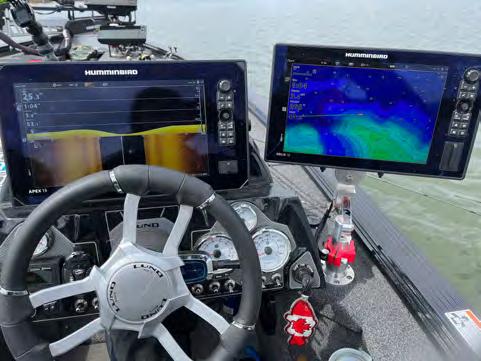
(Continued on page 28.)





area is we have so many options for fish to catch throughout the year. The ability to catch fish on different waterbodies, in all types of conditions is a valuable trait if you want to be successful as a guide or tournament angler. You have to be able to put fish in the boat. The best advice I can give is to fish every chance you get, on different waters, in all types of conditions, not just on the nice days or the spots where you know you can catch fish.

After high school I went to the University of Manitoba but I didn’t know what I wanted to do with my life so I was kind of on the “keep Mom happy” program. I left there with a degree but I needed to work. I was fairly busy with my fishing activities, some sponsor
opportunities were starting to pop up but I needed to do more, especially during the down times for fishing. I started reaching out to all of the fishing magazines and got a few jobs here and there. The more I did, the more opportunities I got, especially as the Internet become more prominent.
Today, the written word doesn’t get the same number of impressions that video or social media content does but there are still plenty of folks out there that want to read a good story. The university process helped teach me how to write and put my thoughts together. For anybody looking to pursue writing work, having some competence in video editing or running a camera would probably be good skills to learn to supplement the writing gig.

Another of the questions that I get asked quite frequently is “how do I get sponsors”? Obviously, obtaining support to pursue your fishing activities is another dream come true but the reality is, it’s tough today to get sponsorship opportunities within the fishing industry. Most of the companies have a budget that they follow and in most cases, these budgets are hammered.
In most situations, the best way to earn a sponsorship, whether you are a tournament angler, guide or content creator, is to form a relationship with brands that you like and use and then try and let it grow. At some point you have to stand out from the group that you run with, by catching fish, gathering a strong following and earning credibility. This goes back to simply fishing a lot and spending time on the water, honing your craft. Learn how to take good photos and make video, those are important elements that you need to provide.

I actually used to write letters to some of these fishing companies when I was a teenager and that’s how I got my foot in the door with some of them. At the time I had no idea where fishing would take me but some of those relationships still remain today. For me, I’ve been really lucky to have some of the best sponsors who have supported me for many years. Without the help I would never have been able to continue chasing the fishing dream.
That’s my overview of how I stay busy throughout the year with my fishing activities. As I mentioned earlier, it’s not the best way to get rich but if you work hard, continue learning and stay on top of how to catch fish, you can make a living, spend way more time on the water than most and be happy.
Have a great season fishing everybody!
Editor’s Note: Jeff Gustafson grew up on the shores of Lake of the Woods in Kenora, Ontario. He has made his living in the fishing community since he was a teenager as a tournament angler, guide, outdoor writer and fishing promotor. In 2019 he is competing on the Bassmaster Elite Series in addition to competing in several events in Ontario. You can find him on social media at @gussyoutdoors and on his website at: www.gussyoutdoors.com

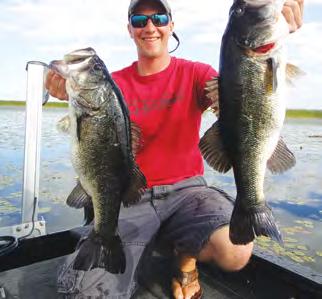
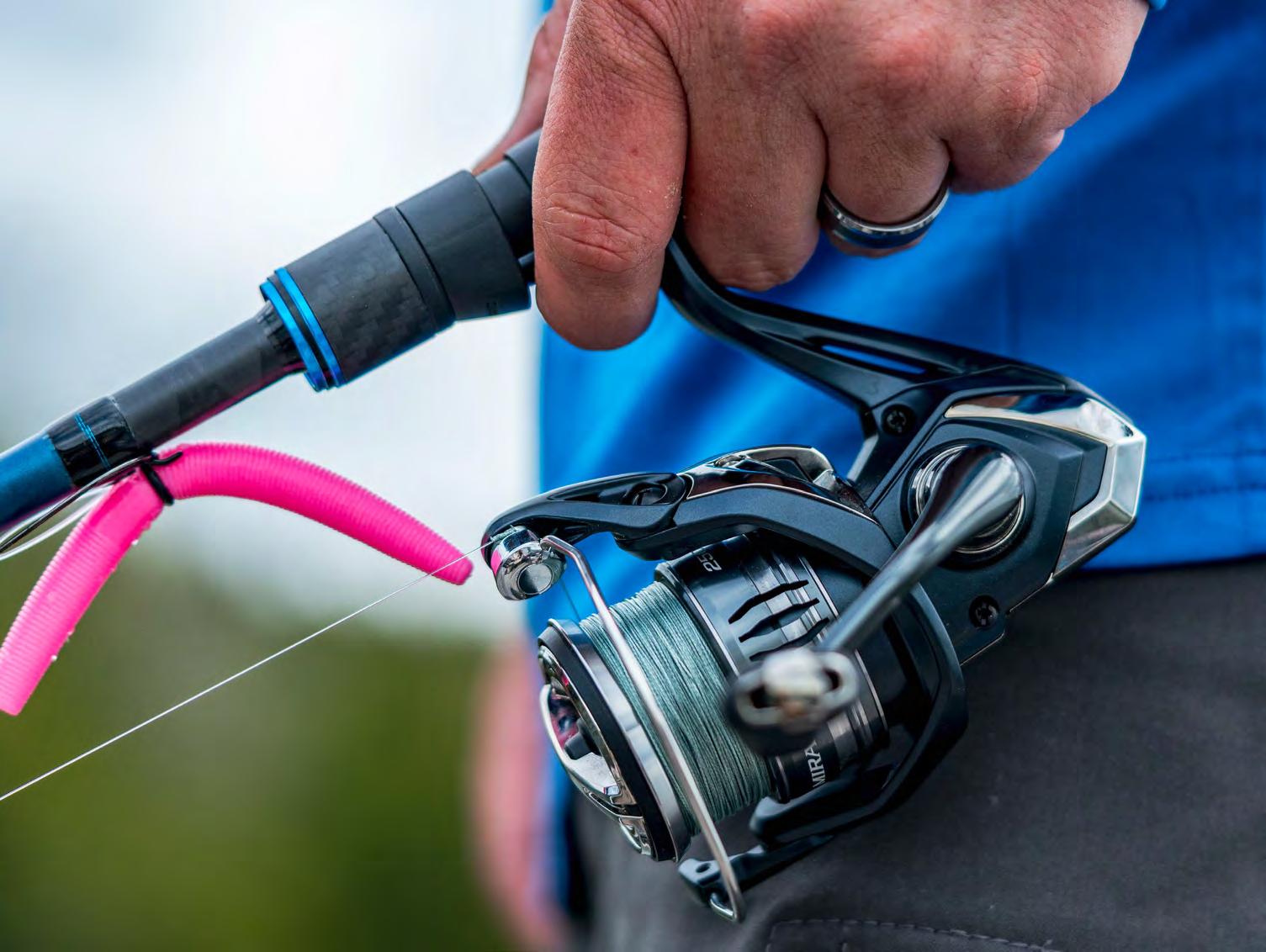


your Humminbird sonar.
hatch in the summer – like dragonfly nymph and stone fly – but midge and mayflies dominate the list!

Walleyes behave quite differently in the summer than they do in the spring. In the spring, walleyes are recouping after the spawn and relate more to the bottom near short, developing weeds and rocks. They are preying on spawning spottail shiners and last year’s young-of-the-year perch.
When summer arrives, cabbage weeds can be like fields of corn and milfoil looks like bushy plumes. Walleyes rise halfway or all the way to the top on the edge of weeds facing the wind while picking off bugs swimming to the surface to hatch. They also hold on isolated bars and structures – quite often, halfway to the surface – on the
feet off the bottom in 20 feet of water. Many anglers have seen walleyes slashing on the surface to feed this time of year. If you are fishing with a bottom bouncer or a jig, you may be fishing underneath the fish.



There are many approaches for suspended walleyes. For example, anglers on the Great Lakes use planer boards to pull crawler harnesses and crankbaits with snap weights, paying close attention to diving charts. Another approach is casting a slip bobber with a leech or nightcrawler on a small Northland Fireball jig or a Gamakatsu Octopus-style hook with an appropriately-sized sinker for the fishing depth. Pay attention to the depth at which walleyes appear on your Humminbird Helix. Remember to bring a retractable tape measure; it is an accurate way to measure distance with your slip bobber knot.






















Amid-August day. With the air temperature still near 30 degrees, activity at the boat launch at 9:30 pm was a Norman Rockwell post card. A bass angler was strapping down the travel tarp for his boat while swatting at a swarm of mosquitoes. Two parents were unloading a runabout, their tired kids already asleep in the truck. A shore angler was making one more last cast from the dock. But there was an exception to what one would expect as the day faded to black. Another boat was being backed down the ramp into the river as everyone else was heading home.
After a smooth launch, good friend John Anderson and I were enjoying the breeze on a half mile run to our first spot of the night. Anderson, a recent inductee into the Muskies Canada Hall of Fame, is one of the most accomplished musky guides in Canada. His business, the Ottawa River Musky Factory, has been a staple destination for musky anglers for over 20 years. Anderson has netted untold hundreds of big muskies for raw rookies and experienced veterans alike. He has filmed with many well known television personalities and is a much sought after presenter at consumer shows across the province and in the US.
Anderson and I had discussed tactics for fishing the graveyard shift for big muskies many times. In fact, we were rehashing the topic mere minutes after launching our first casts into the darkness when a fat and feisty 45 inch fish crushed my bait at boat side. After a brief battle that featured a lot of surface thrashing and short power runs, our first fish of the night was in the net.
Fishing from dusk to dawn is much more popular in the US than it is in Canada. On some famous stateside waters, red and


position on popular musky spots after dark. In some cases, anglers choose night fishing as a way to avoid blistering day time heat and
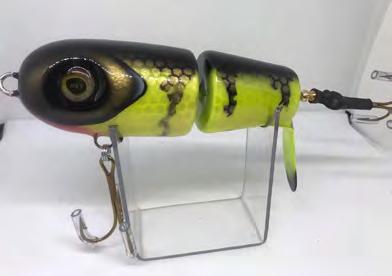




ramps on the Lake of the Woods system. Dewson dialed into the night bite for muskies to avoid playing bumper boats with other anglers during the day shift. And it’s paid off. Dewson finds that he catches larger fish past sundown. One of his biggest, a fish that was barely under the coveted 50 inch mark, was caught in the dark.
“We had seen this fish a number of
never ending pleasure boat traffic. Others opt to chuck baits after sundown as a way to dodge the relentless pressure from large numbers of anglers during the day. While Canadian waters don’t get pummeled to the same degree as lakes in Wisconsin, Kentucky, or Indiana, our fish are pursued hard on a continual basis throughout the season. And, probably 99% of fishing pressure occurs in day light conditions.

Every musky fanatic cringes when they see another boat working one of their primo musky spots. Lucas Dewson, a talented young musky stick who lives in


times during daylight hours for over a month but she wouldn’t play nice. One August night on a full moon I worked her home turf and sealed the deal. That fish and other bigger than average muskies, proved to me that fishing at night can be a game changer.”
Like other knowledgeable musky chasers, Dewson and Anderson believe that trophy size fish change their behaviour when fishing pressure is heavy. Fish burrow into heavy cover and are less apt to chase











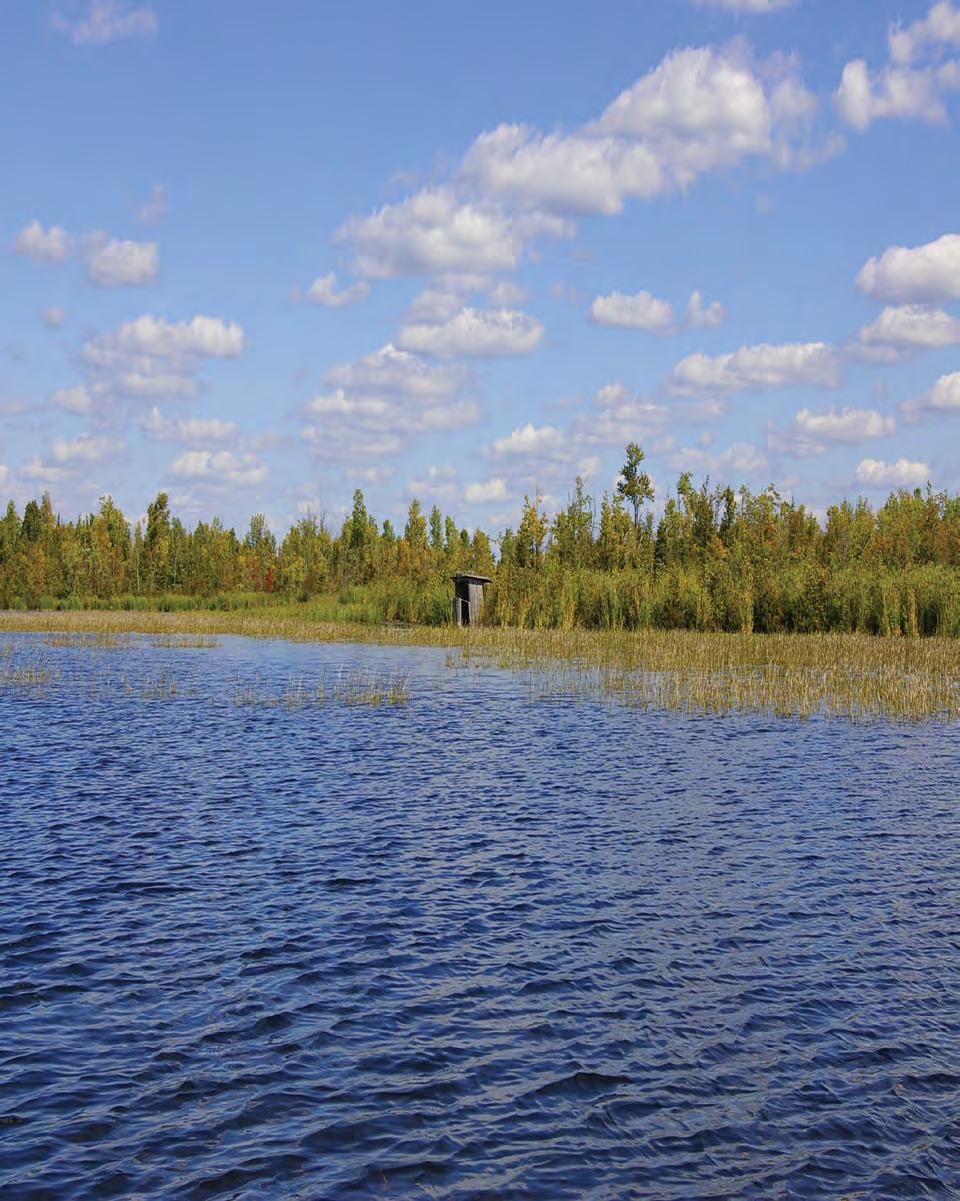




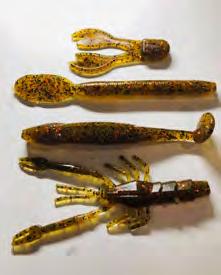


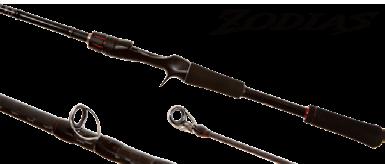

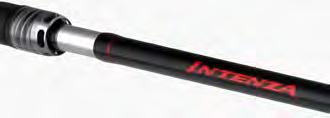













baits when multiple boats disturb their environment. Some fish will vacate an area for more peaceful settings, suspending off flats and weed edges and hunker down on the bottom. Either scenario is bad news for the musky angler.







This behaviour prevails in Nature at large. When the woods are invaded by hunters in the fall, big whitetails bed in the gnarliest cover available and become nocturnal. Think too, of many apex predators. Wolves and members of the big cat family are active after sundown as the night favours both their ability to avoid danger and to hunt.


Different fish species have different abilities to see in the dark. Both sauger and walleye have excellent night vision. Their eyes have a large concentration of rod cells enabling the distinction of colour when the lights go out. Muskies can see in the dark too, but not to the same degree as walleye and sauger. They rely more on their lateral line to detect prey. Their ability to identify colour is also less precise. Knowing dictates tactics for the night time musky angler.
Day light musky fishing in warm weather is all about covering water using speedy and erratic retrieve cadences to trigger strikes. In darkness though, stealth, precision and a methodical approach can work better. Anderson uses a slow, steady, vanilla retrieve for virtually all baits he throws after dark. His motto is “make it easy for a fish to feel and find your bait”. Interestingly, Dewson doesn’t reduce his retrieve speed a great deal from what he uses during sunshine hours, especially if he’s seen high fish activity levels during the day. But, like Anderson, he relies on baits that track straight as opposed to moving erratically.
Dewson, who is sponsored by MKT Baits, relies on one of the company’s top-water lures for surface action. “It’s one of my top producers whether I’m fishing during the day or after dark. I can fish it fast or with rips and pauses in daylight. But, it also shines when worked at a slower pace after dark.”



(Continued on page 37.)


Both Anderson and Dewson set their trolling motors on low and sneak through musky spots like a cat burglar. They make multiple casts to key target areas since a musky’s restricted night vision reduces the size of their strike zone. Neither uses a headlamp when casting believing that the light beam on the water can spook fish.


Every musky angler knows the importance of finishing casts beside the boat. Doing wide, slow circles or figure 8s is equally, if not more, important at night. You will not see a tail gating musky so assume that a big fish musky is tracking your bait on every cast. Slow down your boat side finishes and add in an extra circle 8 or two for fish that lag behind a bait on the retrieve.
Bait choice for night fishing is simple. In fact, a single tray of baits is all you need. Pick lures that make sound, displace water or create vibration. A prop bait is an obvious choice for working the surface. Add a couple of large plastics. BullDawgs and jumbo swim baits are solid choices as they move a lot of water. Bring a crankbait with loud rattles that can be reeled slowly without compromising its action.

Add strips of reflective tape to release tools and the net rim to quickly find key tools in the dark. Reflective tape on the head of a trolling motor makes boat control easier too.
Finally, pack three or four of your favourite blades. While chucking twin 8 and 9 size blades is physically easier, opt for 10s or larger to generate more vibration. Anderson has tricked big fish after dark in flat calm conditions by waking a large jointed shallow running crankbait across the surface at a crawl. When a big musky eats that presentation, it’s as subtle as a plane crash. One other bait to have on board after dark is a jumbo size spinner bait with a large blade that really thumps.
Colour is a minimal factor after dark but there are some exceptions. Nickel or silver blades on a moonlit night will still produce flash. Some anglers prefer

top-water baits with a dark under belly as they offer a solid silouette against the surface on less inky dark or moonlit nights.

The answer to where to fish muskies after dark is surprisingly straight forward – fish exactly where you would target them during the day. Community spots that get bombarded with musky baits during the day can be productive in no light conditions. Fish that are dormant or shift to adjacent deeper water when the sun is high, can often go on the hunt after dark.
On heavily populated musky waters, don’t overlook fishing tight to shorelines in the dark. Muskies will cruise waters that a few hours previously were playgrounds for swimmers and where docks were party central. While chucking baits around docks and tethered boats can be productive, make certain that you’re an accurate caster. A heavy musky bait bouncing off someone’s boat is not cool at any time of day or night.
Mid lake or river, shallow rock reefs and sand flats can be gold for the night time musky chaser. If the structure is bordered by deep water, all the better. Lead in cover like an extended rock spine, adds to the potential of the area. Fish not only the depth breaks around the structure but also fire casts on top of the flat itself.
(Continued on page 38.)
Things that go bump in the night.
Another skinny water area to explore is the inside edge of a weed line. Water depth my only be two or three feet but big fish have no problem hunting the shallows under the cover of darkness. Inside edges and shorelines are grocery stores for big predators. On the shield waters that Dewson fishes, points at the mouths of bays that taper into the main basin are often magnets for big fish after dark.
Anderson, Dewson and other wise musky anglers build their night fishing program around the same natural occurrences as they do during daylight hours. Peaks, moon phases, shifts in wind direction and velocity, and approaching fronts find them on their best locations knowing that fish activity levels can spike.


A major bite window opens with false dawn and lasts until just past sunrise. The beginning of a new day brings the first significant change in light over an extended time span. Consider first light as a reverse sunset. Known in some circles as

Safety first has to be front of mind. Many common sense safety precautions are no brainers. Wearing a PFD all the time is one. Having a well organized, clutter free boat is another. Running unfamiliar water in the dead of night should only be reserved for anglers aspiring to win a Darwin Award.
Protective eye wear should also be a priority. Obviously, sunglasses aren’t the answer. But wearing clear, shatter proof, construction grade safety glasses is. Without protective eye gear, a bait sporting three sets of giant trebles rocketing towards your face when a fish comes unpinned at boat side can be a tragic life altering event.
9 Foot Shimano SKIXX or 9 foot Shimano Compre

Tranx 400, Calcutta Conquest 400 or Calcutta B 400
Power Pro Maxcuatro 80 pound test
Musky Factory Baits leaders

the witching hour, sunset has consistently produced big fish for decades.
The same is true on the flip side. There’s an added benefit to being on one of your most productive spots before the sun reaches the treetops. The water has been undisturbed by other boats or anglers for hours. Big predators throughout Nature, including gargantuan muskies, are on the prowl in these conditions.
Fishing for muskies after dark comes with risks. Sleepiness and stretches of inactivity can be a dangerous combination.


If you want your best musky spots to yourself, slide your boat into your favourite musky pond when other anglers are putting their rigs on their trailers. Fishing the graveyard shift is a uniquely exhilarating experience and puts the odds of catching multiple fish, including giant ones, in your favour.

working the bait faster (pop, pop, pop, pause) all while keeping the bait close to bottom.”
And when he says “see a fish,” he’s talking about the original forward-facing sonar – aka his 1998 Peepers with the OU 20/20 transducer. Yup! Sight fishing for walleyes while standing on an aluminum painter’s platform!
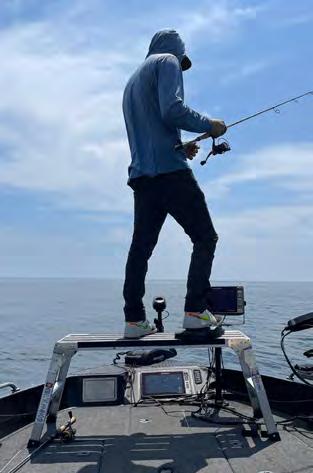
 By: Brett McComas
By: Brett McComas
In case you’re wondering why fish look like “arcs” on your graph… have a little look-see at this curvy bugger Dylan Nussbaum weighed at the National Team Championship on Green Bay recently. He was bomb casting 1/4-oz VMC Twitchin’Jigs in 4-7’while “targeting rock-to-sand transitions or boulders with sand patches.”

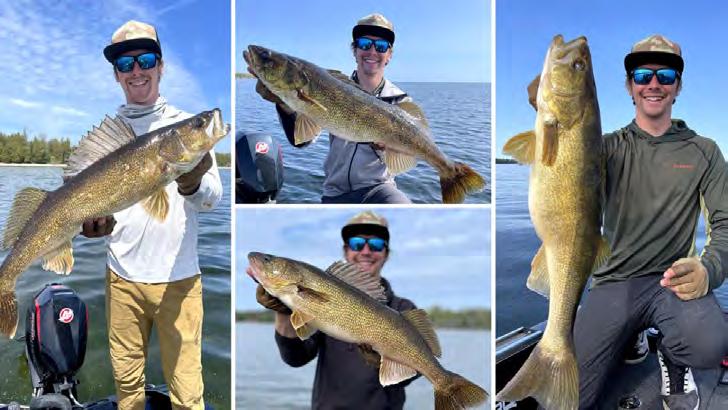
“I believe those Twitchin’ Jigs are geared for the salmon/trout/steelhead crowd (???) but that hasn’t stopped me before.”

Comes in 14 wild colour patterns. Dylan was throwing the natural “bling” colour (top) at super spooky, shallow-water fish… but here’s a preview of some of the other colours that sure look like walleyes would loooove to munch under the right conditions. It has that 2X strong, extra-long-shank TechSet Hook with the Technical Locking Curve and moon-eye head we all love so much. It’s made with “billowing skirts of rabbit hair, tinsel, Flashabou and living-silicone,” so it maintains its shape in the water.
Here’s how Dylan was working ‘em: “Cadence is just a slow pop and pendulum back. Or just a slower reel and pause. If I could see a fish chasing the bait I would start
“If I see a fish I reel in as fast as possible and pitch to them. About 90% spook (SUPER clear water) but when you get one to commit it’s the craziest thing ever. I watched multiple walleyes sideeye the jig, suck the bait half way, then inhale the bait. So cool!”
Man, that would be SO wild! Especially when catching fish of THIS caliber. Amazing stuff! And a big thx to Dylan for the details, pics, and putting up with my annoying questions all of the time lol.
2“Does live sonar mean the end of fishing, or just the end of fishing as we know it?”




That’s the headline of this Dennis Anderson StarTribune write-up. It’s an interesting read, but definitely a little dramatic imo…
Love it or hate it, forwardfacing sonar (LiveScope, MEGA Live, Active Target) is here to stay. It absolutely can help you to find more fish, and make perfect casts at them… but that also doesn’t mean they’re going to bite… Unless you’re fishing for bass.
Of course there’s days where it’s the deal! But there’s also days where I KNOW it’s hurting me… because I’m squatting on walleyes that just aren’t eating, and it’s tough to leave those ‘blobs’ on the screen to go look for active fish instead.

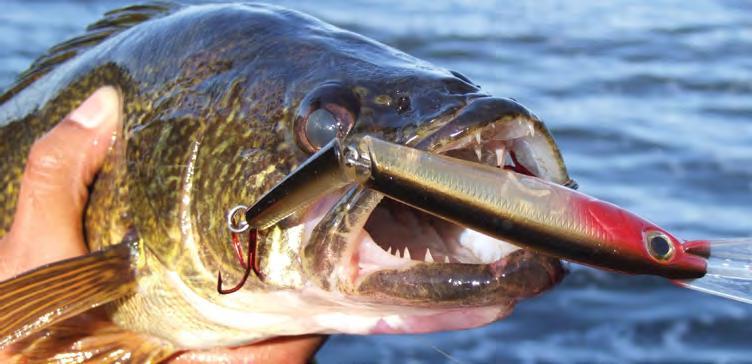
Sight fishing walleyes, Live sonar rant, Mini hunchback caught.

(Target Walleye continued from page 40.)
One quick, recent example:
Last Tuesday we had our local walleye league on Pelican Lake… Buddy and I were running 2 separate LiveScope units in the boat on a lake I’m very familiar with. We were casting at pods of fish for 3 hours straight – on 5 different spots –and never had a bite.
helped coin the name of the lure in honour of his excellent friend, Ned, who has turned it into a lure of extreme value with a cult-like following. “We were always comparing notes” said Gord. “We would email back and forth 4-5 times a day, for weeks on end, over many, many years.”
“Outside of the little group that Ned founded and called, ‘The Finesse News Network’, it flew under the radar for nearly 20 years”, Gord told me during our conversation. “So, it is anything but ‘new’, although the fishing community is buzzing about the lure as the ‘hot new thing’. As a matter of fact, a lot of what are being called Ned Rigs these days are very far from accurate.” Gord further explained, “Many companies are calling any number of moon shaped jigs as Ned jigs. Likewise, company after company has named (or renamed) their smallest plastics as Ned this, or Ned that.”
Finally boated our first and only walleye of the night (just 10 minutes before weigh-in) when we stopped looking at the screen and started throwing a Ned Rig up shallow in just 5-6’ or so. Wonder how many we could have caught if we had been doing that the whole time?
“The Original Ned Rig was the actual rig you got from the pairing of a Gopher Tackle Mushroom Head jig weighing 3/32, 1/16, or 1/32 oz. with half of a 5” Yamamoto Senko worm. That was the original and the marriage of the two components and their resulting characteristics is the rig.
There were 20 boats that weighed fish in that night… and we ended up in 19th place with a whopping 1.19 lbs – LOL. We had a ridiculous amount of technology in our boat that evening (the first time we’ve ever ran 2 LiveScope units at the same time) and the fish still won. It’s still called “fishing” and not “catching.” Oh, and numerous other teams caught fish without using live sonar…
But hey, without “live sonar” I might not have caught this massive bowfin (aka dogfish) that we both SWORE was a walleye all the way until it hit my Clam Fortis Net. Since when are dogfish this colour lol: Sometimes those “blobs” you’re casting at are not the walleyes you think they are….
“After that, the YUM Dinger expanded the lure persona with the comparatively lighter, more buoyant 5” YUM Dinger cut in half. It was about half the weight of the Senko, due to much less salt. Many anglers thought that would make it poorer. But, once the YUM Dinger was fished and most of the remaining salt dissolved, it has more buoyancy and the tail wiggled a bit.
“Everything changed when Zman produced the Zero worm, made from their proprietary ElaZtech material, for Strike King. After the Zero’s success, Zman made their own ZinkerZ under the Zman banner. This super-buoyant, 10X tough worm greatly improved the Ned Rig.”
Spend enough time on the water and you’re bound so see some wild stuff, and no doubt Jake Billings is one of those dudes that puts in the hours. Can you imagine this scenario unfolding... from the kayak?
“Finally, Zman tackle took the lead with their ElaZtech ZinkerZ worms that are nearly indestructible and have the greatest buoyance of all plastics. Ned catches as many as 180 bass on a single Zman worm! Ned’s involvement in the research and development of Ned products at Zman resulted in the Zman Finesse T.R.D. Series (The Real Deal), the first pre-cut or pre-formed Ned Rig worms and finesse bodies. The Finesse TRD eliminates the need to cut a 5” ZinkerZ in half and comes poured in a 2 3/4” worm. Ready to go! No cutting needed!” So, I asked Gord, “What would you consider the best all-round Ned Rig today?”
Absolute madness! But madness in a reeeeally good way.
situation. When people ask my what I think fish mistake the Ned Rig for my response is, ‘I don’t care what they mistake it for, as long as they’re biting it’.” Gord added, “If we’re fishing the clear waters of Whitefish Bay on Lake of the Woods, I like natural and neutral colours versus some of the brighter twotone colours in Kenora’s algae stained waters.”



Jake posted another pic earlier this season that is a different fish, but sure has the exact same facial expression. I would imagine it’s also one of the ones he figure-8’d. #Befuddled


I don’t think the rig can be fished wrong. You can drag it, shake it, count it down and swim it. Just use a systematic method of fishing it from top to bottom and cover the bases. And while on the subject of presentation, Gord had some real gems of advice, “The most interesting retrieve that I’ve been writing about, where crappies and smallmouth are involved is the “Bivins’ Bounce”. Terry Bivins is a retired NASCAR driver from the states and he is an
(Continued on page 52.)
“When Zman came out with the ZinkerZ and, now, the pre-cut Finesse T.R.D., that just perfected it to no end. When you fished it on any of the Zman Shroom mushroom head jigs, it was the Ned Rig personified. All of the colours and subtle hues that Zman and others have in their line-ups can cover any water clarity
Jake: “It followed my giant musky topwater plopper in but wouldn’t hit it. I grabbed my only other rod and I caught it on a bass chatterbait, while doing a figure-8, I had nothing else on my kayak besides musky gear. Hands down the most aggressive walleye I’ve ever encountered.”


covering water. Yet, given today’s advanced electronics, it’s smart to first survey areas to find hard-bottom habitat, bass, and baitfish.
“I always look for points,” said Craig Lister, an Ottawa G. Loomis / Shimano pro.


“This doesn’t just have to be a rocky main lake point. It could be the point off a deep weedline, but there I need to see rocks and hard bottom out to the side on my electronics. Then there are islands, isolated humps, and other offshore structures. The 15 to 24 foot




open-water structures, like shoals, island points, underwater ridges, and, in fall that’s where they’ll be. But, again, it depends because on some lakes bass will move (from offshore structure) back to the outside weeds to eat perch in early fall.”


Lister & Cousvis emphasize concentrating on areas with a hard bottom, given the technique involves regularly banging a crankbait along the floor, smashing it into

to crank it down, keep it down, and then grind it off bottom,” Cousvis said.
The crank’s commotion and bottom disturbance certainly attract fish. But, bass see red when a crankbait hits and deflects off of an object. The sudden change in speed and direction, triggering reaction strikes. “When a crank pops up off cover, this gives it an action like it was stunned,” Cousvis said. “Stop it for a second and let it float up two to three inches. Strikes come after the crank hits or the retrieve starts again.”
The more you use deep crankbaits, the more you’ll get a feel for when to pause the retrieve and when to keep going. It’s apparent when a crank crashes into a boulder or a big stump, warranting a pause to let the buoyant bait time to float up and away from the obstacle before recommencing the retrieve. More, when steadily grinding along a uniform, rocky bottom add the occasional pause to try and prompt a bite from any bass that might be following.
Effectively dredging a crank on bottom requires specialized equipment, beginning with a collection of crankbaits suitable for fish along bottom at a range of different depths. For example, the Berkley Dredger series includes six lures with diving ranges spanning 8-10, 9-11.5, 12-15.5, 16-19.5, 2022.5, and 22-26 feet. Rapala DT (Dives-To) models hit 10, 14, 16, and 20 foot depths. Nothing wrong either with mixing various brands’ baits for various depths.

“I like to have two or three rods with lures with different diving depths to figure out feeding depth,” Lister said. “Some days you might catch bass all over, but other times they might only be biting in 18 to 22 feet and that’s it.” Working with your fishing buddy to hit different depths is a good strategy to cover ground and develop
a pattern. Lister and I did this one day in August when casting to rocky points, spines, and humps. He would cast a Jackall Digle 05 to work around 15 feet, while I used a Berkley Dredger to cover 18 feet or more.

Generally, a slow to moderate retrieve is best for maximizing a deep crankbait’s action. A baitcaster with a low to medium gear ratio keeps the tempo in check, and provides the torque needed for retrieving a big-lipped lure. In addition to slow reeling along bottom, Lister occasionally sweeps the rod back, then catches up with the slack line using the reel as he moves the rod forward. “It changes up the cadence and can fire them up,” he said.
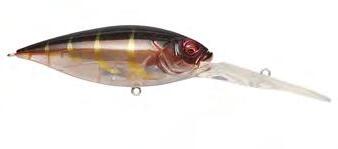


Cousvis says an unhurried retrieve prevents overworking a bait and maximizes the lure’s bottom contact. A sluggish swimming crank is also recommended for bass in cold water. Cousvis doesn’t shy away from speed when up against clearwater smallmouth, though. He’s quickly worked a Deep-Six across bottom over offshore rock piles, ridges, and points in 10 to 12 feet to spark feeding responses from big bronzebacks.



I have to admit, if you’re a Canadian bass fishing enthusiast the month of April 2023 is one that won’t be forgotten for some time to come. It will surely never be forgotten by myself and Jeff “Gussy” Gustafson, aka the “Great Canadian Snow Leopard”!!!

The number of deep diving crankbaits capable of operating high speeds is limited, however. A crankbait’s path along bottom and through a bass’ strike zone can influence whether or not fish bite. Adjusting boat position and experimenting with different casting angles is recommended. Circle offshore humps, stumps, and boulders. Swim crankbaits up, down, and across points, rock ridges, and other structures. Parallel a drop off ledge and make each cast progressively deeper.
Tip: “Always check your line for nicks after cranking for a while, especially if cranking off of rocks,” Lister said.
lesson in understanding that lures are simply tools you use at the right time, in the right location, in the right way.
On the Thursday evening leading up to the Bassmaster Classic in Knoxville Tennessee, I had the honour of being the the first Canadian inducted into the Bass Fishing Hall of Fame in Springfield Missouri. I was presented with the Meritorious Service Award and became only the third individual to receive this award... a total honour!!!
Little did Jeff and I know while sitting at the event chatting, that in just over 72 hours he would claim the title of Bassmaster Classic World Champion! Plus In doing so, he became the first Canadian to ever bring that title home to Canada. You can find more on both these events later on in this issue beginning on page thirty (30).
The Spring issue features our incredible line up of writers and anglers, sharing vital information and experiences to hopefully make you a more informed and successful angler this year and into the future.
When bass are on hard bottom areas away from deep weeds, one can crank away without worry of snagging vegetation – but, as Lister and Cousvis explain above, largemouth and smallmouth can orient on hard-bottoms adjacent to outside weedlines. Positioning the boat parallel to an outside weed edge and fan casting between the weedline and the deeper “open” water can help avoid scuttling a crank into grass. Things get a little trickier on deep flats containing clusters of rocky reefs and weed-covered humps. Sure, one could pick up a jig or Texas-rig, but one advantage to deep cranking is not a lot of folks do it and, subsequently, the method can tempt bass with something they’re not used to seeing.
I recently had a wondrous conversation with the “Ice Boss” himself, Dave Genz, who had called to congratulate me on my Hall of Fame Induction. Dave mentioned something during that conversation that really got me thinking. It was how he had spent most of his life teaching people how to catch more fish. But he finds himself now trying to teach those same anglers to let most of thier fish go... Ringing so true... It literally stopped me in my tracks.
I have to admit, Garmin’s LiveScope forward-facing sonar saves me a lot of headaches in this scenario. I can scan ahead and dial-in my casting angle and distance to keep the lure in deep water, hit key targets on bottom, and avoid thick weeds. All is not lost should a crank snag weeds. Snap the rod to free the lure and don’t be surprised if a bass strikes afterwards.
Preservation of our fishery is very important – so when you’re out fishing this year, be sure to keep that in mind… it really is all about the future!!!
Be safe & when ever possible, take a kid fishing!!!
Deep cranking with a medium-heavy or heavy, technique-specific casting rod is a good idea. These rods have the sensitivity, action, strength, and casting performance needed for the technique. “The longer the rod, the better,” Lister said. “It helps make a long cast. A longer rod is also more giving, so you don’t lose as many fish, especially in deep water.” Long casts are important to increase the time a crankbait has to work along bottom. This is because the bookends of every retrieve involve the lure diving to its running depth and then ascending back to the surface.
A net and pair of long-nosed pliers and a net are useful for landing fish and removing hooks. A lure protector is handy for shielding hooks when storing a rod combo rigged with a crank. Use a hook file to touch up hook points dulled from smashing rocks. Replace hooks as needed.
A crankbait grinding along bottom and ricochetting off structure can be irresistible to deep dwelling largemouth and smallmouth bass. The technique is a fun way to catch fish and brings with it the potential for hooking a giant.
“I learned very early on that fluke-style baits are a top choice for smallmouth bass when they are focused on eating baitfish in cold water,” says Gustafson. “The big thing that we learned from the Lindner’s, back in the early 2000s, when they were winning the Fort Frances Canadian Bass Championship on Rainy Lake is that they were catching smallmouth on and around structure, but they weren’t letting their baits touch the bottom. That is the most important aspect of the technique. Around the same time, electronics were getting better so we could find fish and then watch how they reacted to our baits.




About the Author:

Walleye and pike can also be caught trolling minnowbaits and crankbaits. This includes running a bait over the top of weeds, along a deep weedline, or through water just beyond the weed edge.


I’ve had some incredible days fishing flats where pike and walleye were feeding on yellow perch and other baitfish.
Line type and diameter influence a crankbait’s diving depth. Lighter lines have thinner diameters and produce less water resistance, which encourages a crank to dive deeper. A man of many cranking combos, Cousvis uses either mono or fluorocarbon, typically in 10- or 12-pound strengths. He finds his reaction time is slower with mono. This gives bass extra time to take the lure before he sets the hook, improving his catch ratio. Cousvis uses Sunline 10-pound FC Crank fluorocarbon for dredging the deepest water. Lister prefers 12- to 15-pound Sunline Super FC Sniper fluorocarbon given it sinks and can help get a bait deeper.
Tim Allard is a full-time, awardwinning outdoor journalist and author/photographer of the book, Ice Fishing: The Ultimate Guide. He is a regular contributor to numerous North American print and online publications. From panfish to northern pike, Tim fishes whatever he can, whenever he can.
While flats by nature are fairly uniform areas, there will be specific features where fish congregate. Examples include isolated rock piles, patches of grass, a slight depression in bottom, where a point extends off a flat, and the ledge where the flat drops into deep water. Cover water until you figure out what spots are holding fish. Then dissect these zones by experimenting with different lures and trying different casting angles to maximize the number of fish you catch.
On large, deep lakes, walleye and pike frequently relate to deep, mid-lake structures and feed heavily on cisco, smelt, and other open-water baitfish. These locations typically begin producing in early summer as lake temperatures warm, prompting some populations of walleye and pike to leave shallow areas for deeper, cooler water.
Casting jigs is productive on deep, sandy humps and other structures with minimal snags. Craggy, rocky bottoms are another matter. These are better fished vertically jigging a spoon, bladebait, or a soft-jerkbait on deep structure.
Trolling a deep-diving crankbait is another good strategy and an effective way to cover a lot of water. Pulling the bait through deep water and then across the top of a hump can trigger strikes.
“Big” Jim(When Keep It Simple Shines continued from page 3.)


DIPPING SAUCE
90ml Water
30ml White Sugar
30ml fresh Lime Juice
30ml Fish Sauce
5ml Sriracha Sauce
5ml Cilantro (chopped)
PERCH

450 gr Perch Fillets (cleaned)
15ml Canola Oil
Sprinkle Kosher Salt, Black Pepper & Paprika
500ml Rice Noodle Vermicelli
(cooked per instructions on bag)

In my opinion, summertime is all about two distinct cooking styles. The first is on the barbecue, with big, bold, smoky flavours. The second is light, refreshing, and adventurous, just like this dish. When it’s hot and humid out, forget the grill and try this delicious Asian creation instead. Requiring almost no cooking, this recipe makes eight spring rolls, but you can easily increase the ingredients accordingly to make more.

250ml Red, Green, & Yellow Pepper, (julienne cut)
1/2 English Cucumber, (julienne cut)
5ml each Ginger & Garlic, (fresh chopped)
Salt & Pepper, (to taste)
5ml Sesame Oil
8- 8 1/2-inch Round Rice Papers



8 Red Leaf Lettuce Leaves
1 Mango, (peeled & julienned)
60ml Cilantro Leaves, (chopped)
8 Basil Leaves – (whole)
8 Mint Leaves – (whole)
15ml toasted white sesame seeds
Mix sauce ingredients in bowl and set aside in fridge. Slice fillets into 8 x 3-inch strips and season with salt, pepper and paprika. Cook in canola oil in a frying pan on medium heat for 1 minute on each side, then set aside. Cook rice vermicelli per package instructions, then set aside. Toss peppers and cucumbers with ginger, garlic, salt, pepper, and sesame oil, then set aside.
Organize remaining ingredients into separate piles, at the ready. To assemble rolls, soak one rice paper at a time in cool water until soft, then place on a cutting board. Place one fillet strip, ¼ cup vermicelli, oneeighth of pepper-cucumber mix and one-eighth of remaining ingredients in the center of the rice paper. Fold both ends over the ingredients, then roll them up. Repeat with the remaining 7 rice papers and ingredients. Place a damp paper towel on top of the completed spring rolls to prevent them from drying out before serving.
When ready, serve with dipping sauce.
Cheers!
Editor’s Note: Avid outdoors person, competitive angler, 2-time gold medal winning chef at the Culinary World Olympics and educator Cameron Tait truly loves being in the outdoors. Cameron is an active member of the Manitoba Wildlife Federation, Walleye Anglers Assoc. of Manitoba, Central Walleye Trail and on the Pro Staff team for Alumacraft / Suzuki and Minn Kota / Humminbird. When not pursuing his passion for the outdoors, Certified Chef du Cuisine Cameron can be found surrounded by mouth watering food.





